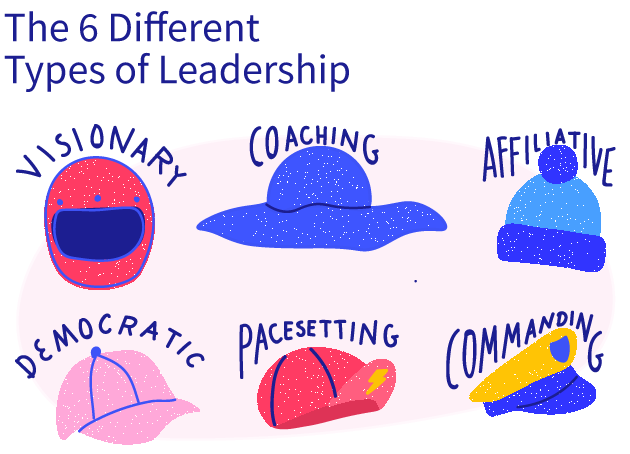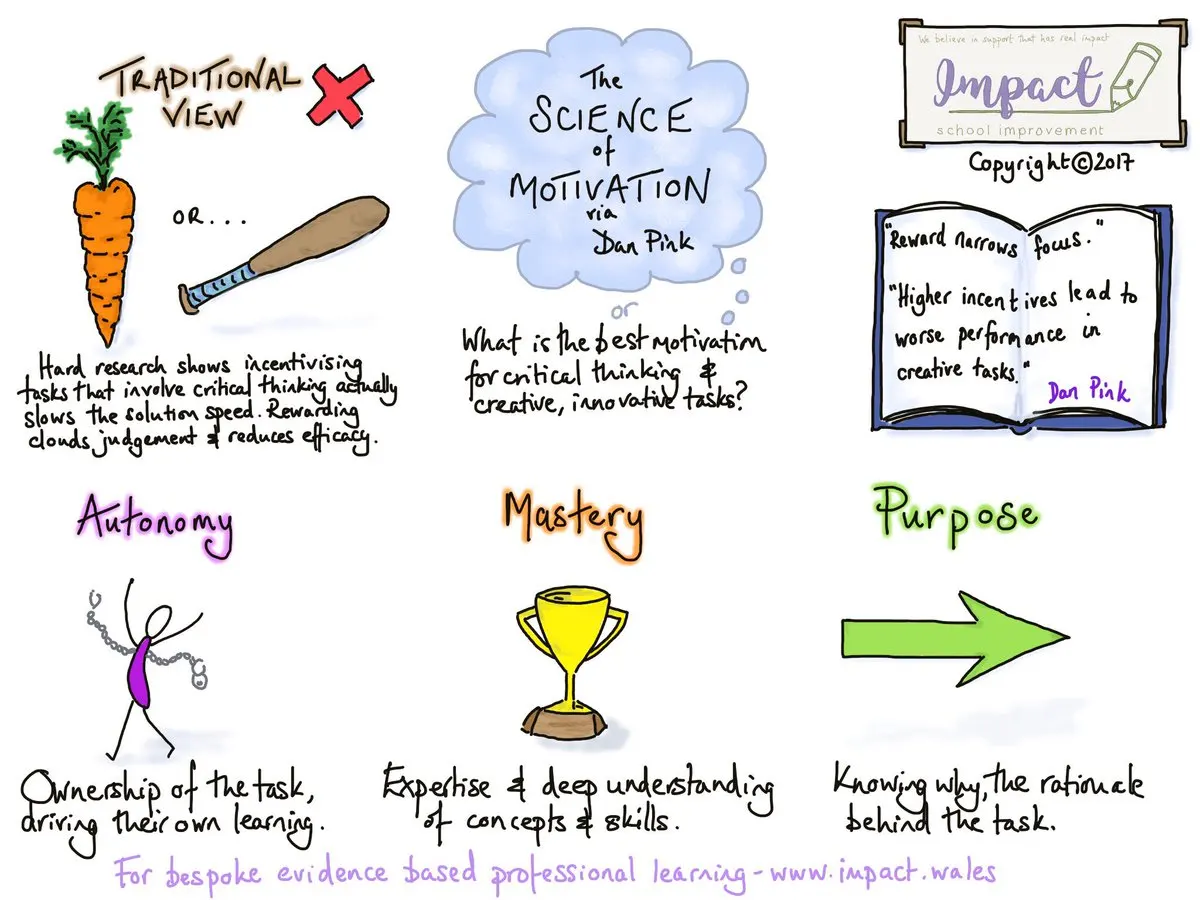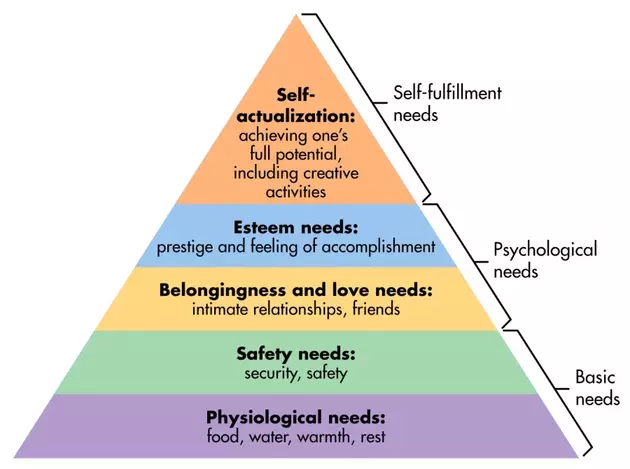I’m not usually one to share anything leadership related because I was worried about turning into a motivational LinkedIn “influencer”. Diving into technical leadership and making that lateral shift in my career had me really struggling to communicate all of the things in my head to my team. I had initially jumped into the role because I had an idea - a vision if you will - about how the Platform Team would embrace the theory an ideology of the DevOps movement and drive great SRE practices in the company. What I didn’t realise was how much I didn’t know what I was missing in terms of building and motivating a team.
1. Becoming a manager is not a promotion - it's a lateral move onto a parallel track. You're back at junior level in many key skills.
— Sarah Mei (@sarahmei) May 11, 2017
I picked this tweet up from Charity Majors’ blog on The Engineering Manager Pendulum which has been pivotal in the way I think about the role that I’m currently in. Being acutely aware of the fact that I’m now a junior again now meant that I needed to seek out as much information as I could to do my job effectively and not turn into one of those young managers who think leading a team means micromanaging a team.
What ended up happening was that I attended a leadership course which helped me understand the difference between management and leadership.
Trait Leadership
This refers to the personal characteristics that make what is generally known as a good leader. Some of the traits that are easily identifiable of a good leader are:
- Having a high level of emotional intelligence (this is a non-negotiable trait)
- Understanding different leadership styles and when to use them (this is something that I wasn’t even aware of)
- Understanding what motivates and engages the people on your team
- Knowing how to plan for the future
- Having a vision
I won’t go into too much detail about these traits, as they’re all fairly self-explanatory but the point on emotional intelligence was particularly interesting to me because as someone in a leadership position I wasn’t aware of how much my presence had been amplified within the organisation.
The thing most important to me about emotional intelligence as a leader isn’t just about understanding others, but also understanding how my emotional state can affect others around me. Negative emotions are something that become much more amplified in a leadership position, as these are powerful emotions that can very quickly disrupt good work and cause distress among a team.
In order to create a positive impact as a leader, there is a high level of self awareness required as well as the ability to introspect and know what your emotional state is. But it’s not only about understanding your emotional state; There is also an element of being able to manage your emotions. Having a good grasp of these two things helps you create a positive impact on your team. Emotional intelligence can be distilled into four key concepts:
- Self Awareness - Understanding the emotions you’re feeling and why, being able to assess your strengths and limits, and being self-confident.
- Self Management - Is the ability to keep disruptive emotions and impulses under control. This means being transparent and adaptable to situations.
- Social Awareness - A strong indicator of this is empathy, and having the ability to understand peoples’ perspectives and take active interest in their concerns.
- Relationship Management - Is what allows us to interact positively with resonance. This means having the ability to inspire, influence, and develop others.
Behavioural Leadership
Otherwise known as distinct leadership styles. This was something that I wasn’t aware that I was consciously doing. Learning about these styles helped me understand that these are not a definition of a leadership type, but these represent a toolbox of different ways of managing different situations.
- Visionary - Is a style that needs to be implemented when you want to set clear direction for a team and help them understand the end-goal.
- Coaching - Is what is used when you want to connect a person’s wants with organisational needs. This is how you develop the people on your team, as well as build the necessary trust and ongoing conversation to be able to give regular feedback as a growth tool.
- Affiliative - A lot of this can just be building relationships withing your team and focusing on the people’s emotional needs in the team instead of just the task at hand.
- Democratic - This style is particularly useful during times of big change. Getting and valuing the input of those on your team is how you develop buy-in or consensus on the changes being proposed.
- Pacesetting - This is a style that I think gets misused, as many would think that it means going faster. In tech, it’s incredibly easy to set the pace in a team by developing baseline metrics, and ensuring that we’re continually hitting those targets or above. This doesn’t mean using stupid vanity metrics like LoC committed or features completed. This can be as easy as setting the baseline for something like feature lead time, and working to improve that through investment in automation and process.
- Commanding - This is another one that in my opinion gets ridiculously misused, as many would think that it means putting your foot down (which is my nice way of saying they think it’s a justification for being a jerk). This is a style that should be used in situations like production outages when someone needs to take control as the incident leader and direct people to the right tasks to ensure things are resolved as efficiently as possible.

Engagement
As I’ve gotten older I’ve grown to understand the value of this, particularly as it’s something that has become incredibly important to me.
It’s become a very well known fact that the more someone makes, the less likely it is that an if/then reward will be enough to keep them engaged in the work that they are doing. Particularly in tech where everyone seems to be on some kind of ridiculous salary anyway, your employees will need something a lot more intrinsic in nature to motivate them.
In 2020, the “stick and carrot” way of motivating people just doesn’t work. It’s lazy and in many cases dangerous.
This is where Pink’s Autonomy, Mastery, Purpose Framework becomes invaluable.
- Autonomy - is the need to direct your own life and work. This is something that many engineers are more than happy to have control over. Autonomy gives your employees the ability to think creatively without needing to conform to strict workplace rules. This can also be driven by giving your team what needs to be done, and not how it needs to be done.
- Mastery - This is the desire to improve, and the software industry is built on the need for mastery. This means giving your team the right guidance and career progression path they need to develop their careers. Many companies fail to realise that this also means investing in a well thought out IC track. Give your engineers the ability to master their skills without having to switch careers and become managers.
- Purpose - Give people an understanding of what “the bigger picture” actually is. Creating buy-in into your team’s vision gives them a sense of purpose, but also helps them develop ideas of their own of how to get there. Embrace these ideas and take them onboard when they arise. Your team wants to head in the same direction as you.

More on these methods of intrinsic motivation can be found in Daniel Pink’s book, Drive.
Many software companies are also moving towards the idea of ROWE (Results Only Work Environment), where performance is measured by what was produced and not how many hours someone spent sitting at their desk.

Employees seek a compelling company culture where they feel they fit in, are appreciated, and are proud of what the organisation stands for and does. Today – more than ever – company culture is fundamental to business success. Not only does it influence a company’s reputation, but it also plays an essential role in the attracting and retaining talent.
One way someone in a leadership can focus on helping their team feel like they fit in is to take the four pillars of engagement into consideration:
- Effective Communication - How effective and consistent is the communication in your workplace?
- Career Development - Does your team feel as though they are learning new things and developing their existing skills?
- Reward and Recognition - Does your team feel as though they are appreciated and are their ideas recognised as successful?
- Trust and Confidence - Does your team trust you and the organisation? Do they have confidence in your organisation’s future?
Understanding the motivations of the different members of your team is also something you need to put effort into understanding. Some of your team members may already openly communicating what gives them a good reason to wake up in the morning, and others may require a bit more help for you to fully understand their motivations.
As a leader you need to understand that extrinsic motivation (observable behaviours driven by external rewards) can only go so far, and is often the tip of the iceberg of what keeps your team members motivated at work. I briefly mentioned extrinsic motivation earlier when talking about Mastery, Autonomy, and Purpose. These are considered ways of giving someone intrinsic motivation (motivation to achieve goals or skills). These are considered invisible and take additional effort to determine.
When helping your team set goals for themselves, many people use SMART Goals which help people keep their goals on track. It’s also worth keeping in mind the four P’s when setting these goals: Personal, Positive, Possible, Prioritised. Think about where your team member is on their hierarchy of needs and help them set their goals according to that.

Setting a Vision
Vision is everything about what drives our work. Core values, purpose, mission and strategy are all part of our vision.
This is something that I’ve always struggled with. Being able to properly communicate the work I’ve been seeing the team accomplishing and how we can help a business has always been something that hasn’t been easy to translate to words. I’m sure I’m not the only one that has this problem.
Engineers don’t like being given a checklist of items to complete. A lot of people I’ve worked with have always had something meaningful to contribute in their own way, and having the ability to contribute to a shared goal is something that can motivate people, and hopefully help the team go beyond what they had initially intended.
Setting a vision isn’t something that can be done on a whim, as you want to get buy-in from everyone on your team. Getting their opinions helps you turn something that would be your vision into your team’s vision. To get to a vision, you want to be able to get some answers from your team around the following:
- Values - Determining the values of your team will help you identify the behaviours of your team as expressed by our response to others, our commitment to personal and organisational goals, the way we spend our time, and the way we operate as a team. Having values helps us build trust and psychological safety, willingness to take risks, openness to learning, as well as people on the team having a greater sense of inclusion and commitment.
- Purpose - Why does your team exist? Figure out who your primary users are as a team, and what we as a team offer them.
- Mission - This is one of those nice high-level statements that you usually read about a team. You want to be able to articulate a clear and compelling goal that our team is striving to achieve. The attributes of a good mission are:
- It represents an ideal, and conveys a compelling picture of the future, a sense of what is possible.
- It’s inspirational and values oriented, and appeals to all those who have a stake in the Mission.
- It’s focused and clear enough to guide decision-making.
- It’s flexible, which means that it is general enough to accommodate changing business conditions.
- It’s communicable, and can be successfully explained within two minutes.
- Strategy - Ah, that lovely word that makes me subconsciously cringe every time I read it. This is the steps that we take to realise the mission we have defined.
The Difference Between Management and Leadership
So taking all of the above into consideration, I started building up a good understanding of the differences between management and leadership.
In terms of the way these roles affect engineering teams, I can see some fundamental differences in the way of thinking between the two roles. Below is a short table of things I (and probably you) probably notice in your day-to-day. This serves as a reference, but I’ll elaborate on each one, and why the former is less likely to retain great engineering talent.
| Managers | Leaders |
|---|---|
| Goals/Objectives | Vision |
| How and When | What and Why |
| Doing things right | Doing the right thing |
| Views: Short Term | Views: Long Term |
Goals/Objectives vs. Vision
A manager setting goals/objectives for their team will undoubtedly leave their team in the dark about the decisions that were made that motivated the need for those goals to be completed. The team is effectively handed a checklist of to-do items that need to be completed by a certain date.
An example of this could be: “Set up EC2 instances using puppet to orchestrate the setup and deployment of servers for developers”.
The only way of motivating your team to get this done is via extrinsic motivation. Taking Maslow’s Hierarchy of Needs into account, if you’re leading a team of relatively senior engineers this kind of work is almost offensive. They’re making enough money for extrinsic motivation to not work, and they’re even more disengaged because there is no self-actualisation being accomplish with this work.
A good leader is capable of having a good vision of what they want to achieve, and will leave the work of thinking about how to accomplish that vision up to their engineers.
e.g. “We need a platform for developers to be able to easily, quickly, and safely ship their code”.
Taking the above into account, the team will use their accumulated expertise to develop a solution to the problem that will vastly exceed the expectations that you might have had of “configure a server onto an EC2”. By having a say into the how of achieving the vision, your engineers will have achieved that self-actualisation piece by making a meaningful contribution to the vision.

How/When vs. What/Why
This bit is very similar to the examples I mentioned above. A manager will tell their team exactly how to do the work, and when it should be done by (to-do list). A leader is capable of explaining to their team what needs to be accomplished and why it needs to be done.
Think “I need this navbar styled in this particular way by the end of the sprint.” The manager here likely has a motivation for getting this done, but by keeping their team in the dark around the reasoning behind this, they’re likely to miss out on some great ideas from the team about how to accomplish the goal the manager has in mind.
Compare that to “Our current conversion rate is x% and we need to bump this up to y% to make more money” (the money bit is maybe a bad why but it’s late and my brain isn’t working). As a result of a good leader giving the what and why of the work being done, the team will also think of ways to accomplish this goal. Maybe they’ll experiment with a navbar tweak, but figure out that it’s actually the page latency that is causing a high bounce rate. As a result you have an engaged team that is invested in creating a better experience for their customers, and with the right culture of experimentation you could be doing some really cool stuff!

Doing Things Right vs. Doing the Right Thing
This one is particularly apparent in larger enterprises where the manager will become a stickler for the process in place and enforce it among their team. If you’re experiencing a production outage and the only way to deploy the hotfix is via 3 levels of emergency approval the manager will stick to that process exactly. A good leader will identify that the most important thing to do is to establish service stability.

Short Term Views vs. Long Term Views
A manager will usually have a very short-term view of the work that needs to be done. Let’s use the first example of setting up a server for a team. Short-term this will get the work done and that item will be marked off the to-do list.
If a leader is to approach with with a long-term view they would look at how likely it is for this request to come up from another team, which would lead to thinking about how to give other development teams the automation they need to get their job without having to raise a support ticket every time which would lead to an increase in productivity on all sides.

There is Still a Place for Management
Taking both management and leadership into consideration, it doesn’t necessarily mean that one is generally better than the other for everything. There is still a place for management practices. Coaching, strategic thinking, mentoring, and communication are all incredibly important skills to have. The way you’d likely see management practices being used in the wild is when the team needs to stay on track or if you’re handling an incident that needs affirmative action.
In my opinion, management practices such as the carrot and stick way of motivating people have no place when trying to motivate a highly skilled and highly paid workforce.
These are only a few examples of some of the comparisons you can make between management and leadership, particularly in engineering organisations. Many engineering-driven companies like Atlassian, Google, etc. have realised the potential of employee engagement and actively support this.
Google has the concept of 20% time regardless of your opinion of it was a great catalyst that delivered some great products to the company such as: Gmail, Google maps, Adsense, and Google Talk. Adsense alone is responsible for 25% of Google’s annual revenue.
Atlassian regularly runs ShipIt Days (previously known as FedEx days) that they see as something incredibly important for driving intrinsic motivation. It drives creativity, innovation, and gives employees the chance to work on things they think are important, but haven’t had the time to do as part of their “day jobs”.

Self-Reflection
Apologies for my massive brain dump. I’m still processing a lot of this information. Despite all of the lists of different definitions, the most important thing I learned was the ability to discern between management and leadership. To me, good leadership is something that takes lots of conscious effort to achieve. The best leaders aren’t necessarily the people who wanted that role, but the people who are passionate about doing the right thing.
Today we know that empathetic, trust-based human leadership is not only the most effective way to lead a team but also the most profitable way to run a company.
The late management guru Peter Drucker was one of the first to recognise the shortcomings of traditional management. He identified the emergence of the “knowledge worker,” and the profound differences that would cause in the way business was organised.
With the rise of the knowledge worker, “one does not ‘manage’ people,” Mr. Drucker wrote. “The task is to lead people. And the goal is to make productive the specific strengths and knowledge of every individual.”
Hopefully having a better understanding of what I don’t know yet will give me the motivation I need to improve myself to help my team achieve their goals.
Now that I’m done with this post, I’ll get back to my usual shitposting.
